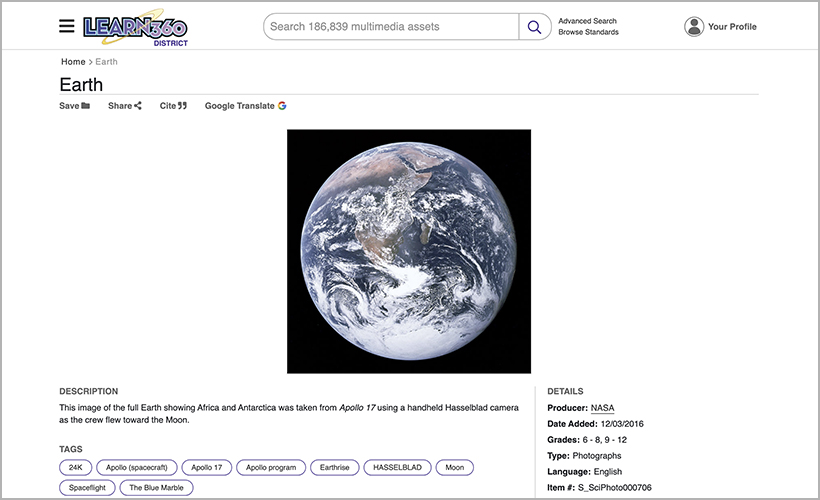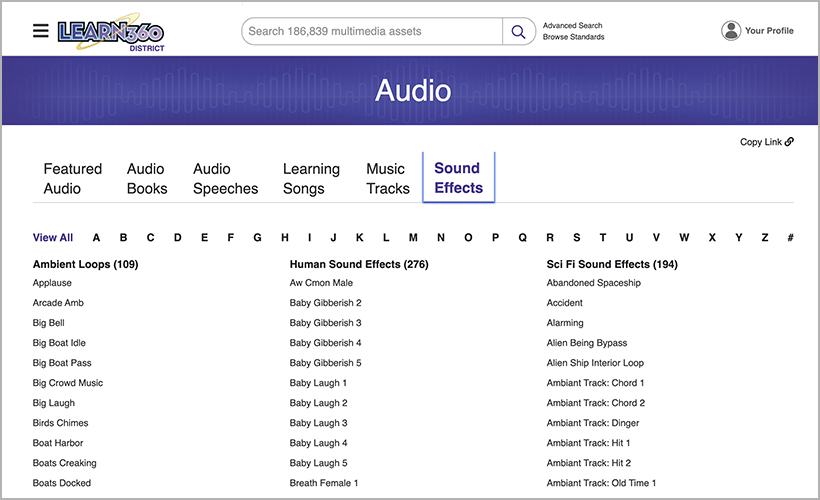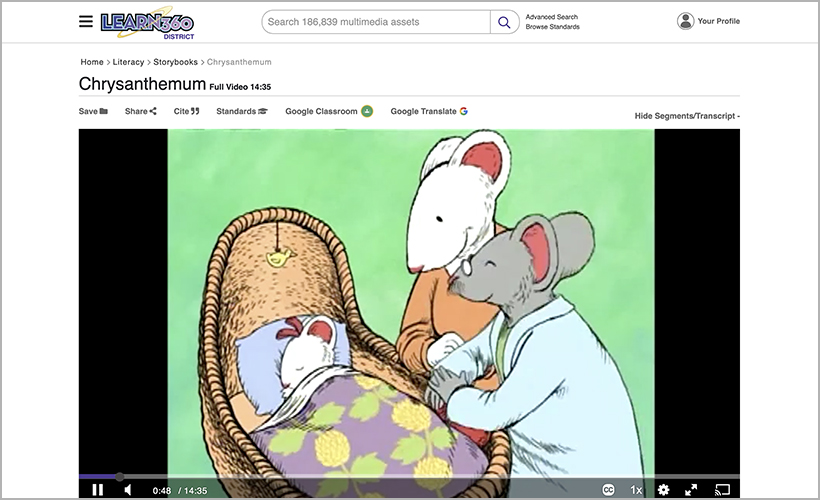From Shel Silverstein to Shakespeare, April is the month dedicated to celebrating the words and insights of history’s greatest poets. Explore the prose and musings of your favorite wordsmiths with Learn360’s inspiring videos, audiobooks, and poetry worksheets, including those you can find in Learn360’s Poetry Topic Center. Then get creative and inspire your students to do some creative writing of their own. These five creative writing ideas will help you start.
Zoom In Picture Stories
Are your students always taking pictures? Engage their curiosity with the images you can find on Learn360. Launch your next lesson by pulling up an image from Learn360. Don’t tell your students what the picture is. Zoom in on the image and then project it for your students. Challenge them to guess what the image is. As students guess, ask your students to share descriptive words connected with the image. Write down all the descriptive words and task students to write a poem, haiku, or story about what the image is. Once all students have submitted their writing, reveal the image. Don’t forget to print out the blurry image and the clear image, and turn your students’ writing into your next bulletin board to engage your whole school community.
For this example, I used an image of Earth to write a rhyming poem:
Earth
Milky swirls, white foam
Darkness deep, hint of home
Blurry curve, dark expanse
Give the earth a second chance

MadLibs (Learn360 Version)
Give each student a keyword to start with. Instruct students to filter until they’ve narrowed down their search to 10–15 videos. After watching each video, challenge students to write a poem incorporating the titles of the videos. When students have completed their poems, have them share their learning from the videos and present their poems.
For this example, I used the keyword “woman” and I filtered by Newest to Oldest, Science, PreK–2 for 33 results and wrote the following haiku:
Woman in Science
Hail her eyes and ears
The intelligence of her
Abilities true
Guess the Sound Stories
Whether your students are constantly asking you questions about the next test or today’s lunch, we know that they are endlessly curious. Channel your students’ curiosity with Learn360’s audio recordings and sound effects.
Without showing your screen, play one of the sound effects. Have each student write down adjectives to describe the sound. Then, play it a second time and ask students to write down verbs for the sound. Next, ask students to write down emotions connected to the sound. Task your students to arrange the words into a poem. To extend this lesson, challenge students to write a story inspired by the sound. Finally, announce the name/title of the sound effect. List the sound name as the title of the poem.
For example, I used Leaves Chimes 1:
Leaves Chimes 1
Yard filled with chores,
Anxiety building, back and forth
Give me one more mindful moment
Breathe in the tinkling wind, crunching layers

Write the Script
The imagination of a child is a powerful entity. Celebrate your students’ abilities to envision imaginative stories with this creative writing prompt. Choose a Learn360 video with an exciting plot line. Mute and hide the captions and transcript.
Without sound, have students write dialogue and script for the characters. This is an excellent opportunity to explore the grammar rules of dialogue and how to flesh out your writing with adverbs and location descriptions. Challenge your students to set the scene by pausing the video frequently to let them take in the setting and emotions of the characters before exploring the dialogue. As a celebration, have students perform for the class and others.

Imagine the Video
The inverse of “Write the Script”: Choose a Learn360 video. Copy and paste the transcript of that video and print it out for your students. Without showing students the video, challenge them to storyboard and draw out what they imagine is happening in the video. Consider asking students to find the adjectives in the transcript, and draw out the character’s inside and outside traits. Compare and contrast the language used to describe different characters. Question how the setting impacts the story. Get creative and watch your students’ imaginations come alive!
What Is Learn360?
The ultimate streaming multimedia resource for the K–12 educational market, Learn360 is an easy-to-use media library that is correlated to standards, organized for educators, and full of K–12 content from the industry’s top producers. Learn360 gives teachers, students, and parents access to more than 170,000 media resources—videos, interactives, printables, audio content, and more—on any Internet-enabled device, anytime, anywhere.
Take a FREE TRIAL of Learn360 today!
Are you a subscriber? Log in now to access these titles and more!
See also:
- Using Learn360 in the Classroom: Literacy Guide: PDF
- Fun and Easy Ways to Celebrate National Poetry Month
- 5 Creative Ideas for the Elementary School Classroom
- Project-Based Learning Ideas with Learn360: Look Toward the Future
- FREE infographic: 12 Benefits of Closed-Captioning and Transcripts in Education
[Hero image source: Monkey Business Images/Shutterstock.com]


